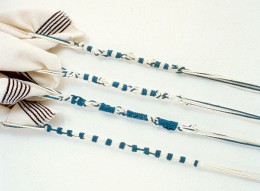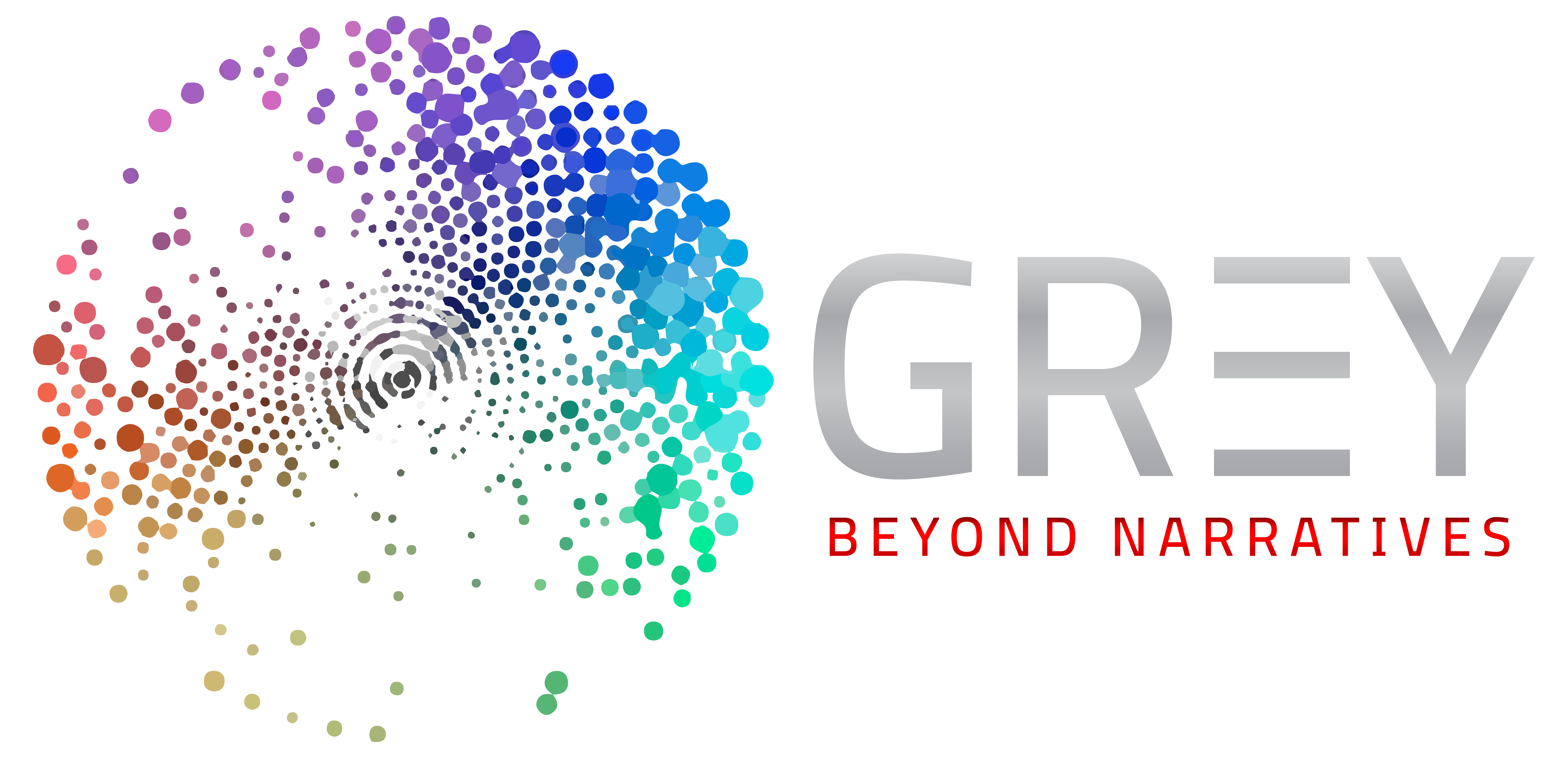

Do the blue tzitzit strings of this traditional Jewish prayer shawl reflect the shade of blue in the Bible, called tekhelet in Hebrew? Evidence suggests the tekhelet that colored ancient blue tzitzit was sky-blue and derived from murex dye.
In the Bible, a shade of blue called tekhelet was God’s chosen color for the ancient Israelites. Tekhelet drapes adorned Solomon’s Temple, and tekhelet robes were worn by Israel’s high priests. According to Baruch and Judy Taubes Sterman in “The Great Tekhelet Debate—Blue or Purple?” in the September/October 2013 issue of BAR, even ordinary Israelites “were commanded to tie one string of tekhelet to the corner fringes (Hebrew, tzitzit) of their garments as a constant reminder of their special relationship with God” (Numbers 15:38–39). The tradition of blue tzitzit still exists today.
But what was the actual color of ancient tekhelet and blue tzitzit? Was it a shade of blue or was it closer to purple? Blue tzitzit and tekhelet-colored fabrics were widely worn and traded throughout the ancient Mediterranean, but by the Roman period, only the emperor could wear tekhelet. By the seventh century C.E., with the Islamic conquest of the Levant, the tekhelet’s source and method of manufacture were lost.
The free eBook Life in the Ancient World guides you through craft centers in ancient Jerusalem, family structure across Israel and ancient practices—from dining to makeup—throughout the Mediterranean world.
A century ago, Isaac Herzog, who would later become Israel’s first chief rabbi, researched tekhelet for his dissertation. He concluded that blue in the Bible was a bright sky-blue derived from the secretions of a sea snail, Murex trunculus.* This species was known to produce a murex dye the color of dark purple. Decades after Herzog’s death, chemist Otto Elsner proved that murex dye could in fact produce a sky-blue color by exposing the snail secretions to ultraviolet rays during the dyeing process. Sky-blue tzitzit, then, could be made with murex dye.
Despite Elsner’s discovery, the debate around the color of tekhelet continued. Dissenters argued that the ancient dyers, who created dyes in covered vats, likely didn’t know how to adjust the dye colors using the sun’s ultraviolet rays. Eleventh-century Biblical exegete Rashi described tekhelet as a deep blue or dark violet. A violet swatch of wool discovered during excavations at the first-century Herodian fortress of Masada was proven to have been colored by murex dye.
In a letter to BAR, Professor Zvi C. Koren, director of the Edelstein Center for the Analysis of Ancient Artifacts at the Shenker College of Engineering and Design in Ramat Gan, Israel, criticizes the Stermans’ analysis, to which the Stermans have replied. Visit the BAS Scholar’s Study: The Great Tekhelet Debate page today.
However, important evidence persuasively suggest that Biblical tekhelet was in fact sky-blue. Assyriologist Wayne Horowitz explains that the Sumerian word uqnu, the word for the gem lapis lazuli, was used for the color blue and its shades. The term was applied to the sky and to blue wool (uqnatu). When the foreign word takiltu, Hebrew tekhelet, was adopted into Akkadian, the same cuneiform signs as uqnatu were used. To the ancient Mesopotamians, therefore, the color of lapis lazuli and the sky were equivalent to the color of tekhelet.
So what was the color of Biblical tekhelet? The Jerusalem-based Ptil Tekhelet Foundation believes it was sky-blue derived from the murex dye. For over 25 years, this foundation has produced hundreds of thousands of blue tzitzit strings colored with murex dye. The blue tzitzit on Jewish prayer shawls remind worshipers of the sea, the sky and God’s holy throne.
Not a BAS Library or All-Access Member yet? Join today.
This Bible History Daily feature was originally published in 2013.
Notes:
* See Ari Greenspan, “The Search for Biblical Blue,” Bible Review, February 2003.
Get more biblical Archaeology: Become a Member
The world of the Bible is knowable. We can learn about the society where the ancient Israelites, and later Jesus and the Apostles, lived through the modern discoveries that provide us clues.
Biblical Archaeology Review is the guide on that fascinating journey. Here is your ticket to join us as we discover more and more about the biblical world and its people.
Each issue of Biblical Archaeology Review features lavishly illustrated and easy-to-understand articles such as:
• Fascinating finds from the Hebrew Bible and New Testament periods
• The latest scholarship by the world’s greatest archaeologists and distinguished scholars
• Stunning color photographs, informative maps, and diagrams
• BAR’s unique departments
• Reviews of the latest books on biblical archaeology
The BAS Digital Library includes:
• 45+ years of Biblical Archaeology Review
• 20+ years of Bible Review online, providing critical interpretations of biblical texts
• 8 years of Archaeology Odyssey online, exploring the ancient roots of the Western world in a scholarly and entertaining way,
• The New Encyclopedia of Archaeological Excavations in the Holy Land
• Video lectures from world-renowned experts.
• Access to 50+ curated Special Collections,
• Four highly acclaimed books, published in conjunction with the Smithsonian Institution: Aspects of Monotheism, Feminist Approaches to the Bible, The Rise of Ancient Israel and The Search for Jesus.
The All-Access membership pass is the way to get to know the Bible through biblical archaeology.
The post What Color Was Tekhelet? appeared first on Biblical Archaeology Society.





More Stories
BAS Names New Publisher
The Gospel of the Lots of Mary
Celebrating BAR Publisher Susan Laden